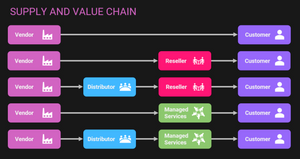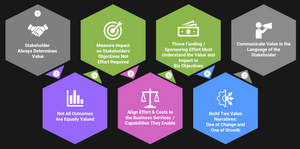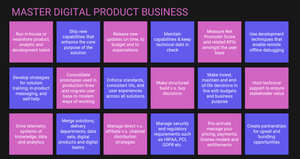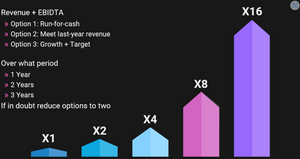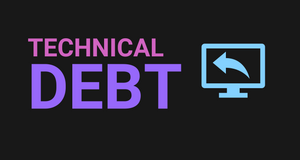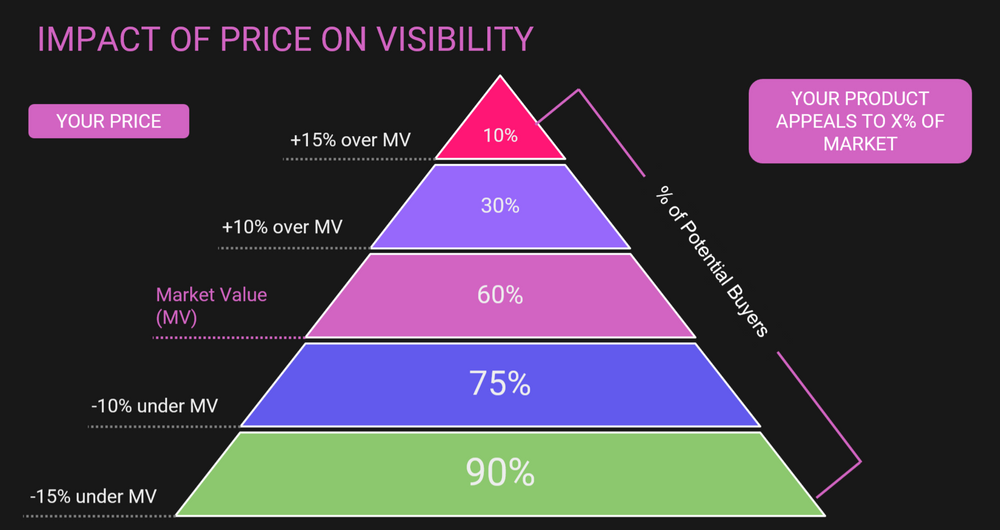Pricing management needs to take into consideration your go-to-market strategy and purpose. Think of your pricing management approach in terms of your:
- Pricing Model (how y
- our pricing will be presented)
- Costs
- Go-to-market strategy
- Discounting strategy/limit
Your model and strategy will need to be flexible enough to adapt to new pieces of information as it happens and when it happens. First off, be clear on your growth objectives and how much of this pricing strategy will contribute to it.

Pricing management is about aligning the value you provide to a monetary amount that a prospect that needs your product/service is willing to pay within the market conditions they find themselves in.
This means the price you set needs to be Less than or Equal to the amount your prospect/target market is willing to pay, to make their problem/pain disappear.
When designing or changing your pricing model or strategy, consider the following aspects:
Customers and market conditions
- Who they are and what they need (you may use tiered pricing to different service needs, e.g. small, medium, large)
- The seriousness of the pain they are experiencing. Do they need to pay that now, or can they delay that purchase? How can you help them make that decision faster and with greater ease?
Clarify how paying for your product/service will help your prospects:
- Do more with less
- Gain more customers revenue
For you, this means that you need to identify the KPI that your product or service will improve? If you know the cost per unit to do a current piece of work, then you can quickly build an ROI case that goes, “you spend this, and you save/gain this….”

Market penetration
What is your pricing strategy bias:
- Sell at cost
- Sell with a markup/margin application (e.g. +15%)
- Sell at a loss
Using an example, Playstation / XBOX units are notorious for being sold below their cost price (meaning they are sold at a loss). The vendor’s strategy relies on making up for this loss through the profitability of the games it will sell.
Competitive landscape
Determine what their alternatives are:
- What alternative products/services are available as an alternative to your products
- How easy are they to acquire or use
- How meaningful or valuable are they to your prospects/target market
- What are your unique selling points
Partnership contexts
Determine whether you are selling direct or sharing some revenue with others, e.g. channel:
- Affiliate models
- will you revenue share with others
- etc.
Remember your basic and indirect costs.
Remember that your pricing management needs to consider the DIRECT costs you need to make the product and the INDIRECT costs you need to ship, maintain, and keep relevant in the market.
- Marketing
- Operations
- Sundries like stationery, paper
- Computing equipment (leased/bought)
- Software to run your business
- Services to maintain your business, e.g. accounting, government reporting
- Support operations (chat/email/phone etc etc)
- HR
- etc.
A good rule of thumb is to consider the MAXIMUM price your customers can transact without escalating for approval. E.g. if your product is aimed towards managers, keep your transaction cost < 500 USD as they can transact without further support or approval cycles.
Your pricing strategy will determine how fast you will grow, how attractive you will be to your prospects and how easy it is to get more business.

